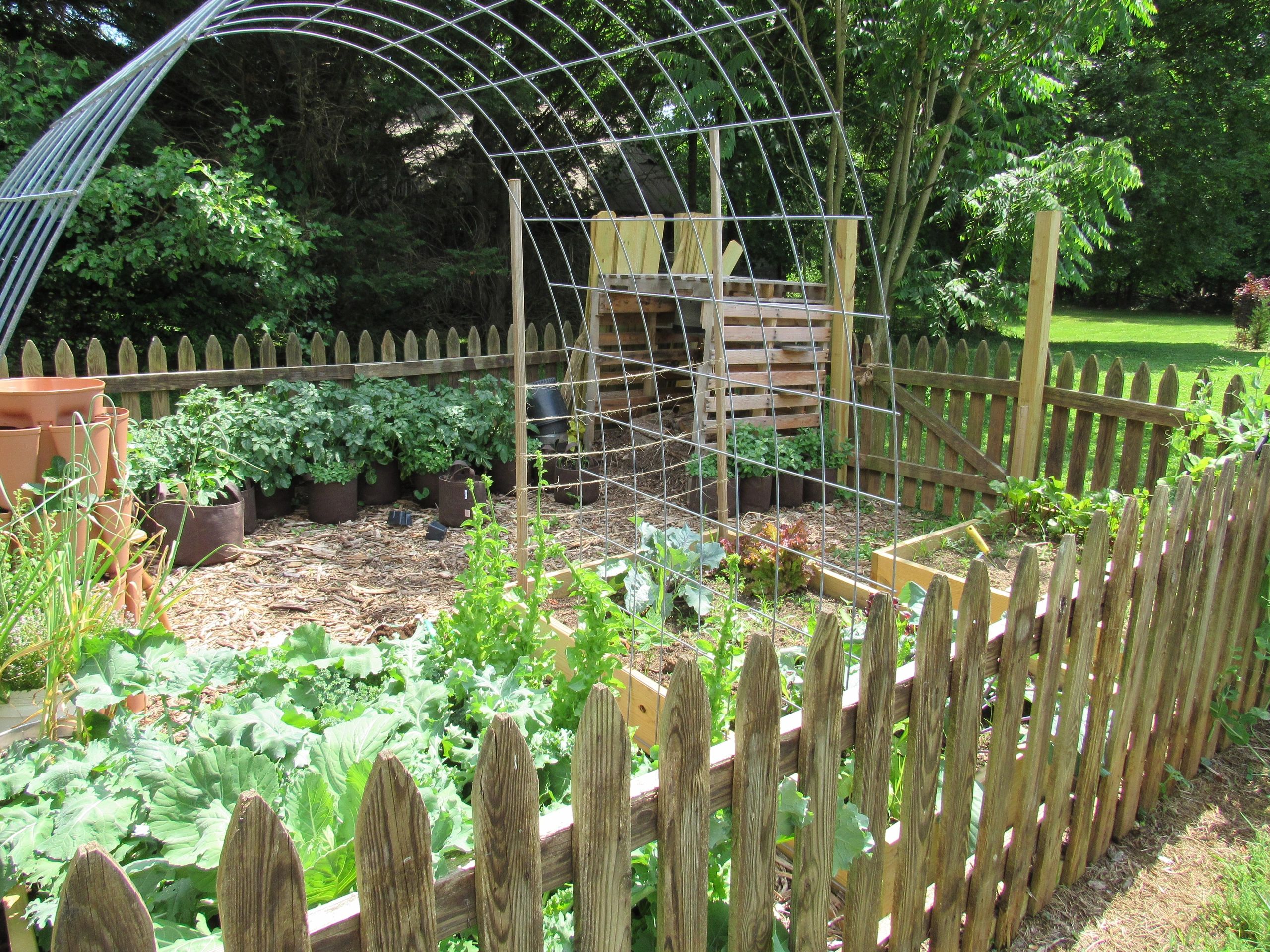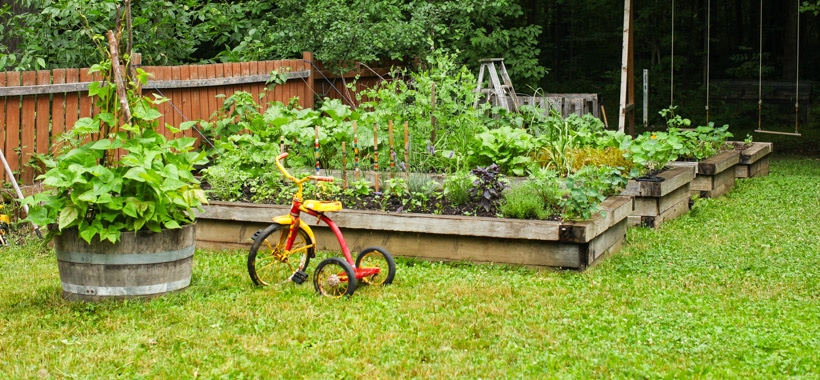Seasonal Planning for Homestead Gardening
Seasonal Planning for Homestead Gardening
Blog Article
Reveal the Keys to Producing a Stunning and Efficient Horticulture Space
Producing a lovely and effective gardening space is not merely an issue of planting veggies and blossoms; it calls for a critical strategy that includes different crucial elements. From picking the right place based on sunshine and soil type to thoughtfully developing your format and picking suitable plants, each decision plays a critical role in the success of your garden.
Selecting the Right Location
Picking the ideal area for your yard is important to its success and total visual charm. The very first step in this process entails evaluating sunshine exposure, as most plants call for a minimum of 6 hours of straight sunshine daily (Homestead Gardening). A south-facing yard generally obtains the most light, while shaded areas can restrain growth and blooming
Furthermore, consider soil quality and drain. Well-draining dirt is essential to protect against water logged roots, which can result in plant conditions. Performing a soil examination can supply valuable information pertaining to pH degrees and nutrient web content, allowing you to modify the soil appropriately.
Moreover, proximity to water resources is one more aspect to evaluate - Homestead Gardening. Having very easy accessibility to a hose pipe or irrigation system can streamline the watering procedure and urge consistent plant treatment. Wind protection is also vital; placing your yard near frameworks, such as wall surfaces or fences, can protect it from severe winds that might damage delicate plants
Lastly, consider ease of access for upkeep and harvesting. A well-placed garden enables hassle-free accessibility, making sure that you can quickly tend to your plants without triggering unnecessary anxiety or disruption. Thoughtful place selection lays the foundation for a flourishing yard.
Selecting Plants Wisely
When picking plants for your garden, it's crucial to consider factors such as environment, soil conditions, and personal preferences to ensure a harmonious and efficient space. A comprehensive understanding of your neighborhood environment will certainly guide you in choosing plants that flourish in your specific setting. Selecting drought-resistant varieties is helpful in arid areas, while moisture-loving varieties might be more appropriate for locations with high rainfall.
Dirt conditions are similarly vital; conducting a dirt test can disclose pH degrees and vitamins and mineral web content, permitting you to pick plants that will certainly thrive. Indigenous plants are typically an excellent selection, as they are commonly well-adapted to local dirt kinds and need much less upkeep.
Show on your individual choices-- picking plants that resonate with your aesthetic tastes will certainly enhance your satisfaction and commitment to maintaining your garden. By very carefully assessing these aspects, you can produce a flourishing and varied plant choice that elevates your horticulture experience.
Creating Your Garden Design
With an attentively chosen plant choice in hand, the next step is to produce a garden format that makes the most of both charm and performance. Begin by examining the readily available space, thinking about elements such as wind, sunlight, and color patterns. A tactical layout must integrate different zones, consisting of areas for planting, paths, and perhaps seating.
Start with larger plants or centerpieces, such as trees or tall perennials, placed tactically to create visual passion. Layer smaller plants in front to boost depth and appearance. Think about the development practices of your selected plants; taller varieties need to be positioned at the back or center of beds, while shorter ones can line the edges.
Integrating paths not just assists in accessibility for upkeep but also invites expedition. Use products that complement the garden's general aesthetic, whether crushed rock, wood, or stone chips.
Furthermore, think concerning seasonal adjustments and just how your layout will look throughout the year. Incorporating evergreens along with seasonal flowers can make sure year-round elegance. Eventually, a properly designed yard design harmonizes the natural elegance of plants with web link sensible considerations, resulting in a space that is both inviting and productive.
Enhancing Soil Wellness

To boost soil wellness, begin by conducting a soil test to evaluate pH levels, nutrient material, and dirt appearance. This will notify your amendments. Integrate raw material such as compost, well-rotted manure, or fallen leave mold and mildew to enhance soil framework, water retention, and microbial activity. Furthermore, exercising crop rotation can stop nutrient depletion and reduce parasite and illness stress.
Mulching is one more efficient technique; it not just preserves moisture but additionally subdues weeds and slowly enriches the soil as it damages down. Staying clear of excessive husbandry is vital, as it can disrupt soil structure and harm helpful microorganisms. Rather, adopt no-till or very little husbandry techniques to keep dirt stability.

Keeping Your Garden Successfully
A properly maintained yard gives satisfaction and performance, requiring constant attention to make certain that plants flourish and the landscape remains welcoming. Efficient garden upkeep entails several essential techniques that boost the health and wellness of your plants and the total aesthetic of your area.
Routine watering is crucial; nevertheless, it is important to tailor your watering routine based on the specific needs of your plants and local environment conditions. Mulching can assist internet retain moisture, subdue weeds, and manage soil temperature. Furthermore, timely weeding avoids competition for resources and nutrients, ensuring that explanation your plants flourish.
Pruning is another important task. It urges healthy development, eliminates dead or infected branches, and forms plants to keep an enticing framework. In addition, checking for parasites and illness is essential; early detection and intervention can conserve your plants from significant damages.
Fertilization should be implemented thoughtfully, using organic options whenever feasible to promote long-term dirt wellness. Lastly, seasonal jobs such as growing, splitting perennials, and getting ready for winter season will guarantee your yard remains dynamic year-round. By complying with these techniques diligently, you can cultivate a yard that is both beautiful and efficient.
Conclusion
To conclude, the creation of a attractive and effective horticulture area calls for cautious consideration of a number of vital aspects. Picking a proper place with sufficient sunshine, choosing suitable plants, making an aesthetically pleasing layout, improving dirt health, and ensuring regular upkeep are important components. By incorporating these techniques, one can cultivate a prospering yard that not only improves the landscape but likewise advertises ecological balance and sustainability. Such a strategy ultimately leads to a rewarding horticulture experience.
From picking the right location based on sunlight and dirt kind to thoughtfully making your format and picking ideal plants, each decision plays an essential duty in the success of your yard. Well-draining soil is essential to protect against waterlogged roots, which can lead to plant diseases.When selecting plants for your garden, it's essential to take into consideration variables such as climate, dirt problems, and personal choices to make sure a efficient and unified space. Eventually, a well-designed yard layout integrates the all-natural beauty of plants with sensible considerations, resulting in an area that is both inviting and productive.

Report this page